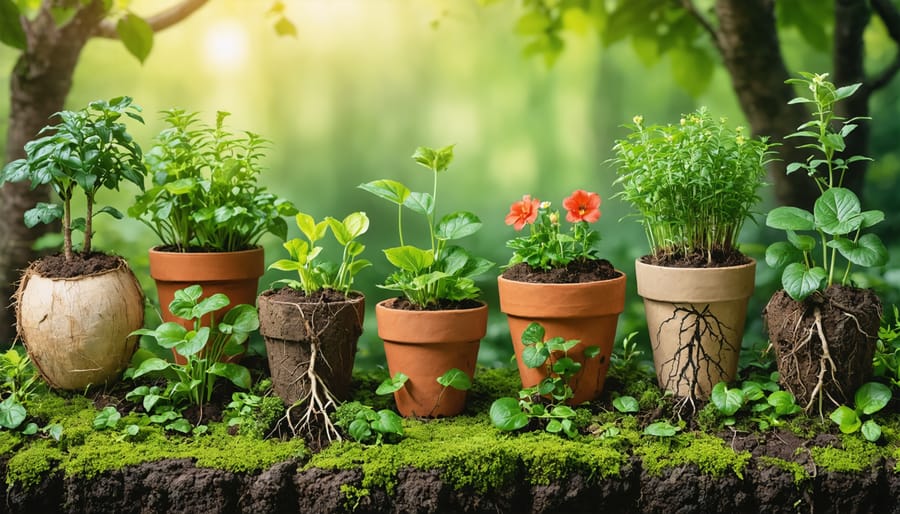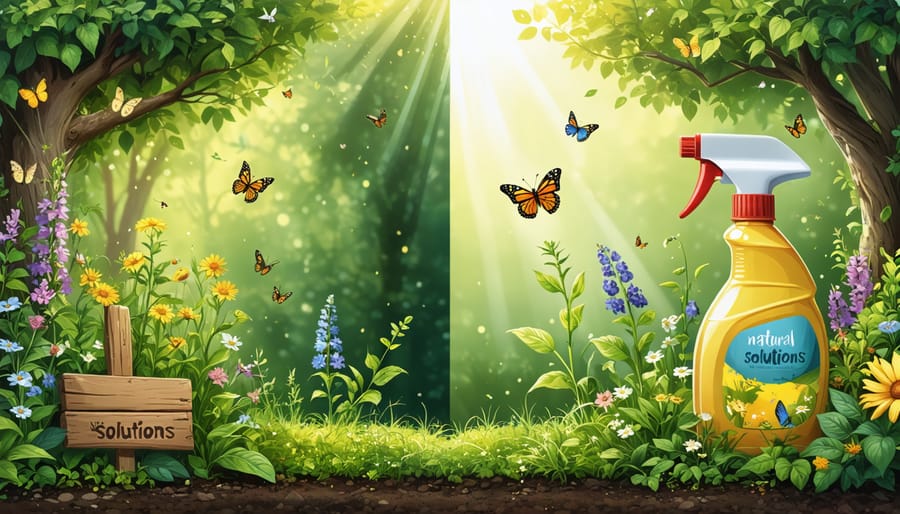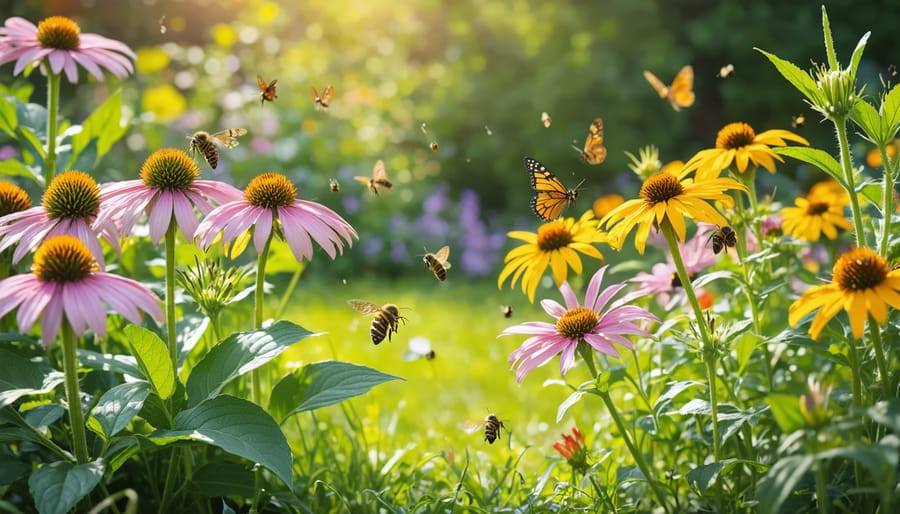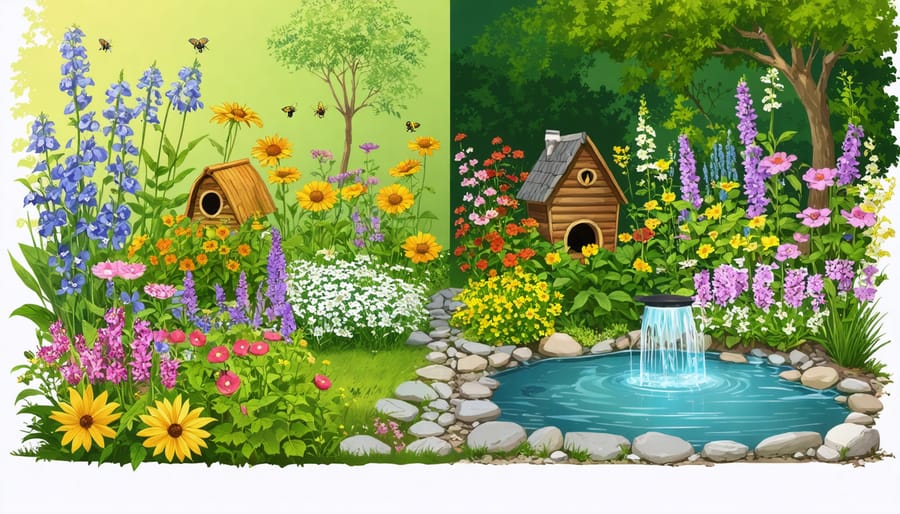Transform your garden’s environmental impact with biodegradable gardening products that revolutionize the way we grow plants. Biodegradable growing pots, crafted from materials like coconut coir, compressed peat, or recycled paper, break down naturally in soil while nourishing your plants’ root systems. These eco-friendly containers eliminate transplant shock, reduce plastic waste, and seamlessly integrate into your garden bed – making them the perfect choice for both seasonal flowers and vegetable starts. As gardeners increasingly seek sustainable alternatives to traditional plastic containers, these decomposable pots offer a practical solution that benefits both plants and planet. Whether you’re starting seeds indoors or maintaining a kitchen herb garden, these innovative containers provide the perfect balance of functionality and environmental responsibility, ensuring your gardening practices align with nature’s cycles.
What Are Biodegradable Growing Pots?
Common Materials Used
Biodegradable growing pots are crafted from various environmentally friendly materials, each offering unique benefits for your plants. Peat pots, made from compressed peat moss, are among the most popular choices, providing excellent moisture retention and natural nutrients. They break down easily in the soil, allowing roots to grow through freely.
Coir pots, manufactured from coconut fiber, are becoming increasingly popular as a sustainable alternative to peat. These pots are naturally resistant to fungal growth and provide good aeration for root development while maintaining adequate moisture levels.
Paper pulp pots, created from recycled newspaper and cardboard, are both eco-friendly and economical. They decompose quickly in the soil and are perfect for starting seeds or growing short-term plants. Some gardeners even make these at home using simple DIY methods.
Rice hull pots offer another sustainable option, utilizing agricultural waste products. These pots are naturally rich in silica, which helps strengthen plant stems, and they break down more slowly than other materials, making them ideal for longer-growing plants.
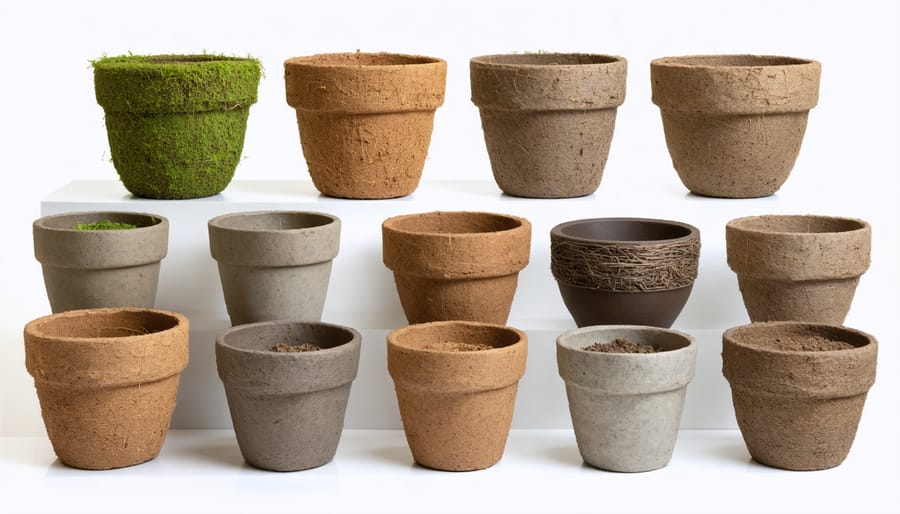
How They Break Down
The breakdown process of biodegradable pots is fascinating and varies depending on the material used. Pots made from peat typically decompose within 4-6 weeks after planting, while coconut coir options may take 2-3 months to fully break down. Paper-based pots are quick to decompose, usually within 2-4 weeks, making them perfect for fast-growing seedlings.
As these pots break down, they enrich your soil with organic matter. The decomposition begins at the bottom where moisture levels are highest, gradually working upward as beneficial soil microorganisms digest the materials. Temperature and moisture levels play key roles – warmer, moister conditions speed up the process, while cooler, drier conditions slow it down.
Remember that some pot edges may remain visible above the soil for a while, but this won’t harm your plants. In fact, this gradual breakdown helps prevent transplant shock and allows roots to expand naturally into the surrounding soil.
Benefits for Your Garden and the Environment
Root Health and Growth
Biodegradable growing pots offer remarkable benefits for root health, creating an optimal environment for strong plant development. As roots grow and reach the pot’s walls, they can sense the organic materials and naturally air-prune themselves, preventing the circular growth pattern often seen in plastic containers. This air-pruning effect encourages plants to develop dense, fibrous root systems rather than becoming root-bound.
The porous nature of biodegradable materials allows for excellent soil aeration and moisture regulation, creating ideal conditions for healthy root growth. As the pot gradually breaks down, it releases beneficial nutrients into the soil, further supporting root development. This natural decomposition also means roots can easily penetrate the pot walls when they’re ready to expand, eliminating transplant shock and stress on the plant.
Experienced gardeners often notice faster establishment and stronger growth in plants started in biodegradable pots. The seamless transition from pot to garden soil means roots can continue growing without disruption, giving plants a significant head start in their new location. This natural integration with the surrounding soil creates a strong foundation for long-term plant health and vigor.
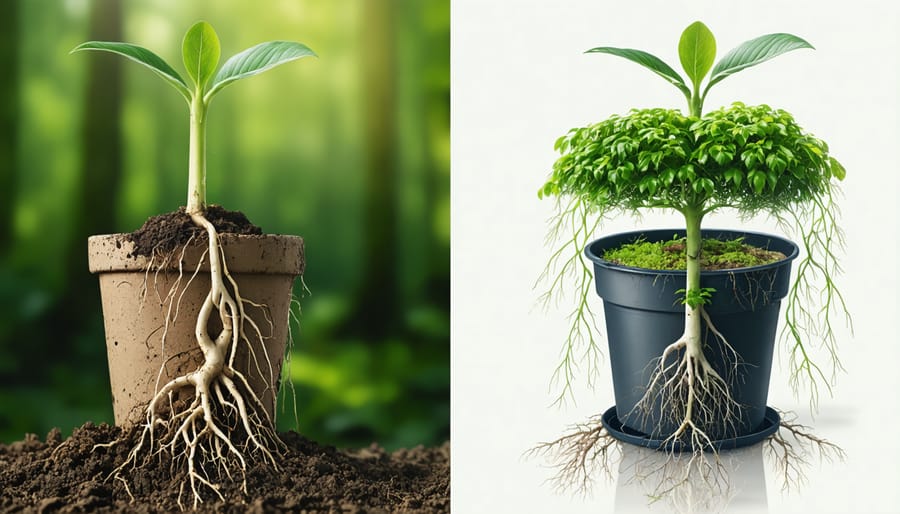
Environmental Impact
Making the switch to biodegradable growing pots represents a significant step toward more earth-friendly gardening practices. Unlike traditional plastic pots that can take hundreds of years to decompose, biodegradable options naturally break down into organic matter, enriching your soil in the process. A single gardener using plastic pots can generate dozens of pounds of plastic waste annually, but biodegradable alternatives eliminate this environmental burden entirely.
These eco-friendly pots also help reduce the carbon footprint of gardening activities. Their production typically requires less energy than plastic manufacturing, and since they decompose naturally, there’s no need for recycling or waste processing. Many biodegradable pots are made from renewable materials like coconut coir, compressed bamboo, or recycled paper products, making them part of a sustainable circular economy.
What’s particularly wonderful about these pots is that they continue benefiting the environment even after their primary use. As they break down, they improve soil structure and provide additional nutrients to your plants, creating a win-win situation for both your garden and our planet.
Using Biodegradable Pots Successfully
Planting and Care Tips
Getting started with biodegradable growing pots is simple and rewarding. Begin by selecting pots that match your plants’ needs – smaller ones work well for seedlings, while larger sizes suit mature plants. Before planting, gently moisten the pot to activate its natural properties and enhance soil health.
Fill your pot about 3/4 full with high-quality potting mix, ensuring proper drainage. Create a small well in the center for your seed or seedling, and plant according to the specific depth requirements of your chosen plant. Water thoroughly but gently to avoid disturbing the newly planted seed.
Place your pots in a location with appropriate light conditions for your plants. For seedlings, maintain consistent moisture levels by misting regularly or using a humidity dome. As your plants grow, gradually reduce watering frequency but ensure the soil never completely dries out.
When roots begin emerging through the pot’s walls (usually visible as small white threads), it’s time to transplant. The entire pot can be planted directly into your garden or a larger container – no need to remove the plant! Simply dig a hole slightly larger than the pot, place it in, and cover with soil, leaving no edges exposed.
Remember, these pots will naturally break down over time, feeding your plants and enriching your garden soil. Avoid moving the pots too frequently once planted, as they become more fragile as they decompose.
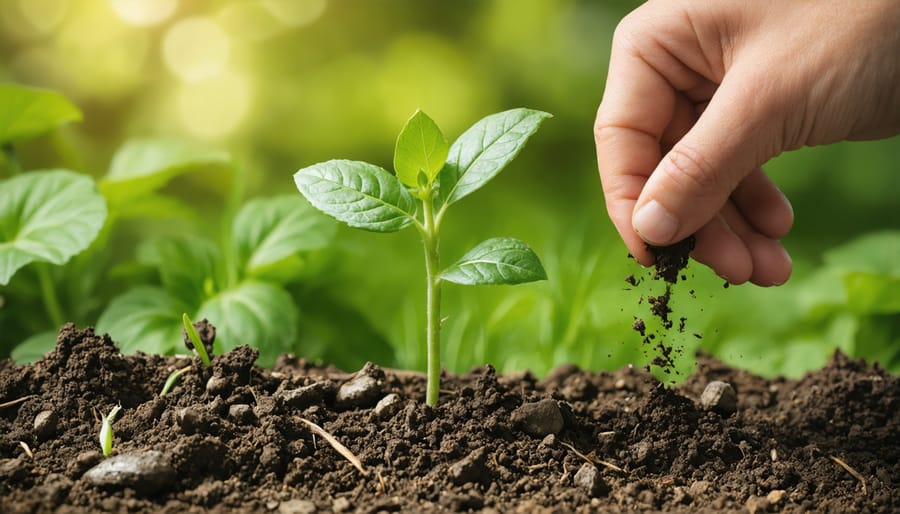
Common Mistakes to Avoid
While biodegradable growing pots are generally straightforward to use, there are several common mistakes that can impact their effectiveness. One frequent error is planting them too early in the season, causing the pots to break down before plants are ready for transplanting. Always check your local frost dates and timing recommendations for specific plants.
Another mistake is letting the pots dry out completely. Although these pots are designed to retain moisture, they can become brittle if allowed to dry extensively, potentially damaging young roots. Maintain consistent moisture levels, but avoid overwatering, which can cause the pots to decompose too quickly.
Some gardeners make the mistake of removing the pot before planting. Remember, these pots are designed to be planted directly into the ground or larger containers. When you do plant them, ensure the rim sits slightly below soil level – exposed edges can wick moisture away from the root zone.
Storage issues can also arise. Keeping biodegradable pots in damp areas before use can trigger premature decomposition. Store them in a dry, well-ventilated space until you’re ready to use them. Also, avoid stacking too many pots together, as this can cause deformation or sticking.
Lastly, don’t assume all biodegradable pots break down at the same rate. Different materials decompose differently, so research the specific type you’re using and plan accordingly.
Making the switch to biodegradable growing pots is a rewarding step toward more sustainable gardening practices. These eco-friendly alternatives not only reduce plastic waste but also provide numerous benefits for your plants and the environment. From improved root development to easier transplanting, biodegradable pots offer practical solutions for both novice and experienced gardeners.
Whether you choose commercially available options like peat, coir, or paper pots, or decide to make your own using newspaper or cardboard, you’ll be contributing to a healthier planet while nurturing your garden. Remember that different plants may have varying needs, so don’t hesitate to experiment with different types of biodegradable pots to find what works best for your garden.
By incorporating these sustainable containers into your gardening routine, you’re not just growing plants – you’re participating in a larger movement toward environmental responsibility. Start small by trying biodegradable pots with your next seedling project, and you’ll likely find yourself wondering why you didn’t make the switch sooner. Happy gardening, and here’s to growing a greener future, one biodegradable pot at a time!

